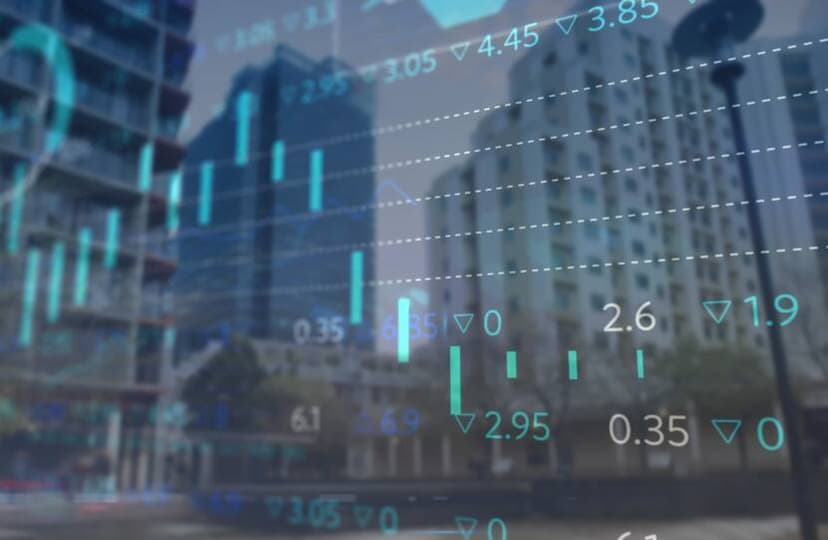Key Credit Convictions for Investors Seeking Alpha

Steven Oh, CFA
Global Head of Credit and Fixed Income, Co-Head of Leveraged Finance

Andrew Karlsberg, CFA
Portfolio Risk Manager and Investment Strategist, Leveraged Finance
Many institutional investors remain underinvested in credit, but we believe it’s a critical time for investors to consider whether their allocations are aligned with their goals – and we see opportunities in several key areas:
Developed market credit offers a potentially lower-risk alternative to equities, with attractive risk-adjusted return potential among leveraged finance assets and investment grade credit.
Emerging market debt features a wide and heterogeneous opportunity set spanning ratings, geographies, and sectors, offering select opportunities and important diversification benefits.
Asia credit is another bright spot: Asian high yield issuers are showing stable or improving fundamentals and attractive valuations, while US dollar-denominated Asia investment grade bonds can serve as an appealing diversifier.
We believe a flexible investment approach is critical during volatile markets like we’re experiencing today. Investors may consider multi-asset credit strategies that can pivot to the most compelling opportunities or a barbell approach that makes the most of the current inverted yield curve.

The recent banking crisis, ongoing high inflation, and the uncertain path of interest rates point to persistent volatility in 2023 – and institutional investors may benefit from reassessing their portfolio allocations to ensure they are meeting their return and risk objectives, even as market conditions shift.
Many institutional investors remain underinvested in credit after years of low yields and an anomalous year in 2022, when equities and bonds declined in tandem. But now we see the tides shifting: Corporate bond yields are reaching highs not seen since before the global financial crisis, at around 5% for investment grade credit and roughly 8.5%-9.0% for high yield bonds, as interest rate hikes continue across central banks (see chart).
Credit Yields Are at the Highest Levels in Over a Decade and Outstrip Long-Term Averages
Credit yield (%)

Source: Bloomberg as of 27 April 2023. US Aggregate represented by the Bloomberg US Aggregate Bond Index Yield to Worst (YTW). US Investment Grade Credit is the Bloomberg US Credit Index YTW. Asia Investment Grade Credit is the JP Morgan Asia Credit Index (JACI) Investment Grade YTW. US Long Duration Credit is the Bloomberg US Long Credit Index YTW. Emerging Market Corporates is the JPM CEMBI Broad Diversified YTW. US High Yield Bonds is the Bloomberg US Corporate High Yield Bond Index YTW. US Leveraged Loans is the Credit Suisse Leveraged Loan Index Yield (3-Year Life). Asia High Yield Bonds is the JACI High Yield YTW.
Among institutional investors, the rise in interest rates has created an inflection point for many pension funds, as higher discount rates have lowered liabilities, increasing funding levels for large corporate plans. This provides asset owners with a timely opportunity to potentially lock in better funding ratios and increase return-generating income by shifting from equity to credit, for example. Moreover, insurers and other investors grappling with how to invest amid the current yield curve inversion could reposition to take advantage of credit opportunities at both ends of the curve – for example, by employing an “enhanced barbell” credit approach.
Key Credit Convictions and Alpha Opportunities
We believe institutional investors can take advantage of compelling opportunities across credit markets and regions in 2023. Many of these areas sit above our Capital Market Line, indicating our view of their strong relative risk/return prospects over the intermediate term – notably relative to equities.
Capital Market Line as of 31 March 2023 (USD View, Unhedged)

Please see Capital Market Line Endnotes. Note that the CML’s shape and positioning were determined based on the larger categories and do not reflect the subset categories of select asset classes, which are shown relative to other asset classes only.
1. Developed market credit: a potentially lower-risk alternative to equities
Leveraged finance offers compelling risk-adjusted return potential. With their attractive average price discounts to par and relatively attractive spread levels given a benign default backdrop, US leveraged finance asset classes now offer a risk-adjusted return proposition in relation to equities, and with potentially lower risk. In Europe, we view valuations as attractive but remain selective from an issuer standpoint. While tail risks (including the specter of energy rationing) have faded, inflation remains sticky, particularly in the UK, and further rate hikes are expected. We see potential for at least a mild recession, which could put some pressure on issuers with weaker balance sheets and drive default rates higher.
Amid the Federal Reserve’s inflation-fighting rate-hike regime, we have maintained a preference for floating-rate bank loans and collateralized loan obligations (CLOs) over fixed-rate high yield bonds since the second half of 2022, as floating-rate assets provide protection against rising rates. However, the value proposition between fixed and floating-rate assets has tilted back toward neutral.
While loans continue to have a meaningful yield advantage due to the current rates curve, the spread differential between loans and high yield has compressed. In addition, we believe the Fed is nearing the end of the rate-hike cycle, which diminishes the value of interest rate protection provided by floating-rate assets.
The high yield market in particular may also offer a benefit that many investors may be overlooking: the discount in terms of the average price relative to par. Historically, during periods like today when the weighted average price for the high yield market offered a significant discount to par – e.g., at the end of 2008/early 2009, February 2016, and March 2020 – we have seen attractive entry points to add to the asset class.
We also believe investment grade CLO tranches offer a decent trade-off with lower-rated leveraged loans as well as yield pickup compared to similarly rated investment grade and high yield bonds. While Europe is a smaller, thinner market relative to the US, we think European triple-B CLO tranches look particularly attractive.
We still favor an overweight to the energy and communications sectors, including cable TV, as well as cruise lines and other areas such as pockets of gaming where we view assets as underpriced.
CLOs Can Offer a Material Pickup in Yields Compared to Similarly Rated Corporate and High Yield Bonds and Leveraged Loans
CLO relative value

CLO yield pickup at each rating category

Source: JP Morgan, Bloomberg, as of 31 March 2023. For illustrative purposes only. Any views represent the opinion of the investment manager, are valid as of the date indicated, and are subject to change.
Investment grade credit proffers additional benefits. Investment grade credit is also showing sufficient all-in yields relative to where they had been historically – making for a potentially opportune time to lock in gains relative to liability performance for pension funds and insurers. And while we don’t view spreads as cheap, we believe they’re fair in relation to the economic outlook.
Taking a step back to look at the relative attractiveness of fixed income versus equities, we compared the dividend yield on the S&P 500 with the yield-to-maturity on a five-year Treasury note. Currently the yield-to-maturity on a five-year Treasury is roughly 200 basis points (bps) higher than the dividend yield on the S&P 500 Index. This differential is wide relative to the 20-year average of only 35 bps. Over the past two decades, when this differential has been considerably higher than longer-term averages, subsequent performance for fixed income asset classes has generally been better, on average.
This means investors may be able to de-risk their portfolios from equities into investment grade credit while still getting a compelling rate of return through return-generating income.
The Gap Between Five-Year Treasury and Equity Dividend Yields May Augur for Credit Outperformance

Source: Bloomberg based on the S&P 500 Index dividend yield and five-year Treasury yields. As of 27 April 2023.
Consider the below index results for subsequent three-year performance when this differential exceeded 100 bps versus when the differential was less than 100 bps:
Average Three-Year Annualized Total Return Performance Following Months When Five-Year Treasury Yield Exceeded Equity Dividend Yields

Source: Bloomberg as of 13 March 2023. US Aggregate represented by the Bloomberg US Aggregate Bond Index. US High Yield is the Bloomberg US Corporate High Yield Bond Index. US IG Credit is the Bloomberg US Credit Index. US Long Duration Credit is the Bloomberg US Long Credit Index. Emerging Market Corporates is the JPM CEMBI Broad Diversified. Leveraged Loans represented by the Credit Suisse Leveraged Loan Index. Equities represented by the S&P 500 Index.
This is the intuitive result, as periods when yields on fixed income assets exceed dividend yields on equity assets by a wider-than-normal margin will occur when 1) fixed income assets are offering higher than historically average yields; 2) equity asset valuations are higher than historical averages; or 3) both conditions exist.
Non-financials and noncyclical sector names look more compelling than financial names. We find pharmaceuticals attractive, given their defensive characteristics and stable fundamentals, and also favor food and beverage companies, which should see a better year as supply chain pressures ease and margins improve as prices stay elevated. We also see opportunities in utilities, which tend to be relatively insulated and offer an attractive defense amid ongoing volatility.
DM financials, while bouncing back from very depressed levels in March, are not likely to fully recover until the Fed takes more concrete steps to assuage investor concerns. We are closely watching bank earnings, with a focus on regionals, and first-quarter results have been better than feared, with no signs of widespread deposit outflows. We expect valuations within the sector to improve and would favor trimming exposure within the sector on any potential rebound, given heightened uncertainty in regionals.
2. EM debt: a heterogeneous market offers select opportunities
Investors tend to be underexposed to emerging markets, and we see compelling risk-adjusted return potential for those who rotate into these assets. China’s reopening is creating tailwinds spurring a period of consumption growth that will spill over to other parts of Asia and EM. Yet because the region can’t be painted with a broad brush, a selective approach to investments is critical.
EM is set to benefit from faster economic growth. While developed market economies face uncertainty about the ongoing tightening of monetary policy and its impact on economic activity and financial conditions (as evidenced by the collapse of several US regional banks and Credit Suisse), emerging markets are poised for a rise in economic growth. This could spur the widest growth premium between emerging and developed markets in a decade.
China’s recovery has many global beneficiaries. China’s faster-than- expected reopening and pro-growth policies should not only support the recovery of China’s economy, but also benefit many emerging markets. The bulk of EM trade is with other emerging markets, and while many local Asian economies will be the primary beneficiaries of China’s growth, a number of economies and industrial sectors across the Middle East, Africa, and Latin America will also benefit from increased trade with China.
EM corporates have strong balance sheets. Against a backdrop of tighter financial conditions globally, EM corporates are supported by strong balance sheets, with leverage ratios at decade-low levels: the EM investment grade corporate net leverage ratio stands at 0.9x, versus 2.6x for US investment grade corporates, while the ratio for EM HY corporate net leverage is 1.8x, versus 3.4x for US HY corporates.1
Lower supply, higher demand. The conservative management of maturities and tighter environment for refinancing have seen primary supply of EM corporate debt fall to multi-year lows. Conversely, higher yields, a positive economic outlook, and strong credit fundamentals should all support an increase in demand from both dedicated EM and crossover investors.
Opportunities span ratings, geographies, and sectors. The inversion of credit curves has made front-end, highly rated EM corporates attractive, in our view. Broadly speaking, BBB rated corporates are looking good across the curve, particularly as many have standalone credit profiles that exceed their BBB ratings, as a result of sovereign rating ceilings. Regionally speaking, we are looking at opportunities across Asia, and from a sector perspective we like global commodity exporters – both areas that stand to benefit from a resurgence in China’s economy.
Emerging markets could add important diversification benefits. The recent banking turmoil in developed markets highlights the value of EM as a diversifier from a fundamental risk standpoint, and echoes similar dynamics seen during the global financial crisis.
3. Asia credit: a bright spot grows brighter
The economic environment in Asia remains more positive than in much of the rest of the world, providing an important tailwind for risk assets in the region, including corporate credit. In our view, some Asian economies, such as China and Thailand, will be among the few major economies to witness accelerating growth this year, and inflationary pressures in most Asian countries remain relatively benign. Moreover, most of Asia’s regional central banks have concluded or are close to concluding their monetary policy hiking cycles, and we expect some central banks might ease before the end of the year.
A favorable macro backdrop and less-hawkish monetary policy benefit Asian high yield issuers. With China’s faster-than-anticipated reopening and ongoing pro-growth policy stance, the macro backdrop for Asian corporates remains favorable in 2023. We expect Asia’s GDP growth to accelerate year-over-year in 2023 (from 3.0% in 2022) as China’s growth rebounds to 5% this year. This contrasts with the recessionary concerns the US and other developed economies are facing.
Moreover, the magnitude of monetary tightening in Asia has been smaller than that of the developed markets, and China has been easing policies. As a result, Asian corporates are facing less pressure from increasing funding costs compared with corporates in other regions. Domestic funding access in major economies remains favorable, with select high-quality corporates actually seeing average funding costs trend down.
Asian HY issuers show stable or improving issuer fundamentals and attractive valuations. Defaults for Asia ex China properties are expected to remain low at 0.7% in 2023, versus 2.3% for US high yield (note that Asia ex China’s property default rate averaged 1.7% for the past 12 years, versus 2.3% for US high yield over the same period).2 Compared to US HY, this space is providing a roughly 100 bp-150 bp pickup for a one-notch higher rating, 1.5 year shorter duration, and a lower expected default rate.3 The China property sector is about 15% of the Asia HY market.4 While defaults among the weakest names will continue to emerge, select high-quality names will benefit from the ongoing policy support and provide a good risk/reward at double-digit potential yields.
US dollar-denominated Asia investment grade (IG) bonds are an appealing diversifier. Tested by a number of shocks over the past few years, they have consistently offered compelling relative returns, especially when adjusted for risk. Steady credit metrics, a shorter duration profile, and attractive yields continue to attract both regional and global investors.
Asia credit offers areas of compelling alpha generation. On the back of the reopening and recovery in mainland China and beyond, we see select opportunities in Macau’s gaming sector and among Hong Kong retailers. Elsewhere in the region, we see selective opportunities in India’s renewables sector and in commodities. The extent to which domestic companies in China can benefit from monetary policy easing, the shakeout of firms that survive the bailout of the property sector, and generally who benefits from the reopening of the economy will continue to shape credit opportunities in the critical China market.
Macro trends that bear watching
While US employment and consumer data have remained resilient, our base case given the ripple effects of recent banking sector woes is that a mild recession looms in the second half. Similarly in Europe, we believe the risk of a mild recession may have been pushed to the second half amid more sanguine economic news than expected heading into the winter. Still, the lagged effect of interest rate hikes and any potential tightening of credit amid banking system stress could spur a slowdown later this year.
In US high yield, we expect default rates to increase over the next 12 to 24 months, but only toward historical averages of 2.5%-3.5%, as opposed to the 6%-8% default rate that might be seen in a more severe recession. And we view current valuation spreads as reflective of such an outcome overall. Spreads appear to fairly reflect, at current high total yield levels, a rational view of economic conditions over the next few years, including default rates.
Risks on the horizon include equity volatility and selloffs, which would hit credit spreads if they increase meaningfully, exacerbated by any additional fall-on effects from the recent banking crises. Uncertainties about whether the Fed’s ongoing balance sheet reduction ultimately creates illiquidity within the Treasury markets, which then spills over into other financial markets, is also a concern. Indeed, we view central banks as a critical risk: Current more favorable economic data could spur over-hiking and over-tightening to tame inflation despite the hit to confidence in the banking sector, thereby hastening or worsening the recession we see coming.
We believe yields are close to if not at their peak for this cycle, and that rising yields are much less of a concern than they were a year or two ago. Many institutional investors remain underinvested in credit given the less-attractive absolute yields seen over the past five to seven years, and we think now is a good time to consider reallocating and increasing risk exposure.
Taking an active approach
Beyond 2023, we believe credit is positioned to deliver strong risk-adjusted returns – notably relative to equities.
While we’ve witnessed purely risk-on and purely risk-off environments, what we’re experiencing now is a period of rolling bouts of near-term volatility, and this tends to favor a more active approach. The greater dispersion among assets in this environment means active management supported by thoughtful bottom-up security selection has the potential to add value by tapping the most attractive opportunities.
We further believe a flexible investment approach is critical during volatile markets like we’re experiencing today. Investors may consider multi-asset credit strategies that can pivot to the most compelling opportunities or a barbell approach that makes the most of the current inverted yield curve.
We believe it’s a good time for investors to consider whether their asset allocations are optimized in line with their goals – and whether a fresh look at credit can help meet them.
For more information on PineBridge’s credit capabilities, visit PineBridge Fixed Income - Yield That Is Ahead of the Curve.
Capital Market Line Endnotes
The Capital Market Line (CML) is based on PineBridge Investments’ estimates of forward-looking five-year returns and standard deviation. It is not intended to represent the return prospects of any PineBridge products, only the attractiveness of asset class indexes, compared across the capital markets. The CML quantifies several key fundamental judgments made by the Global Multi-Asset Team for each asset class, which, when combined with current pricing, results in our annualized return forecasts for each class over the next five years. The expected return for each asset class, together with our view of the risk for each asset class as defined by volatility, forms our CML. Certain statements contained herein may constitute “projections,” “forecasts,” and other “forward-looking statements” which do not reflect actual results and are based primarily upon applying a set of assumptions to certain financial information. Any opinions, projections, forecasts, and forward-looking statements presented herein are valid only as of the date of this document and are subject to change. There can be no assurance that the expected returns will be achieved over any particular time horizon. Any views represent the opinion of the investment manager and are subject to change. For illustrative purposes only. We are not soliciting or recommending any action based on this material.
Disclosure
Investing involves risk, including possible loss of principal. The information presented herein is for illustrative purposes only and should not be considered reflective of any particular security, strategy, or investment product. It represents a general assessment of the markets at a specific time and is not a guarantee of future performance results or market movement. This material does not constitute investment, financial, legal, tax, or other advice; investment research or a product of any research department; an offer to sell, or the solicitation of an offer to purchase any security or interest in a fund; or a recommendation for any investment product or strategy. PineBridge Investments is not soliciting or recommending any action based on information in this document. Any opinions, projections, or forward-looking statements expressed herein are solely those of the author, may differ from the views or opinions expressed by other areas of PineBridge Investments, and are only for general informational purposes as of the date indicated. Views may be based on third-party data that has not been independently verified. PineBridge Investments does not approve of or endorse any republication of this material. You are solely responsible for deciding whether any investment product or strategy is appropriate for you based upon your investment goals, financial situation and tolerance for risk.



